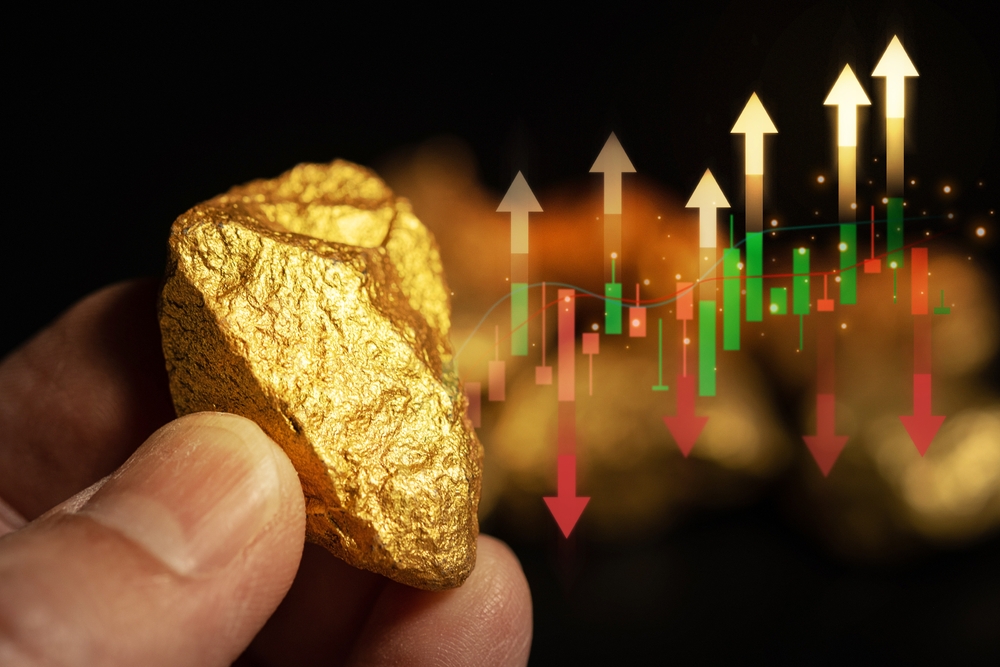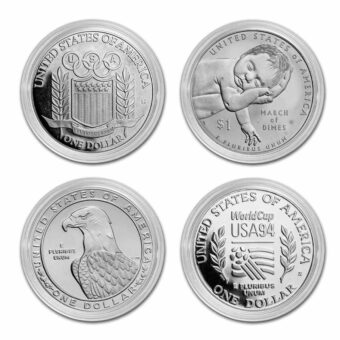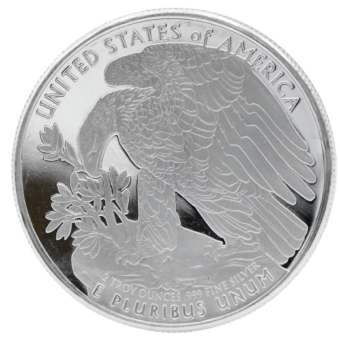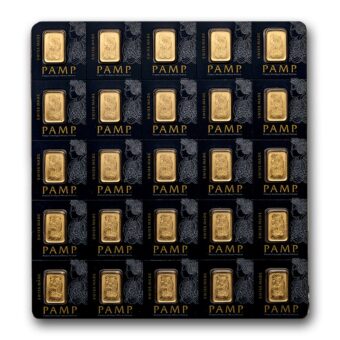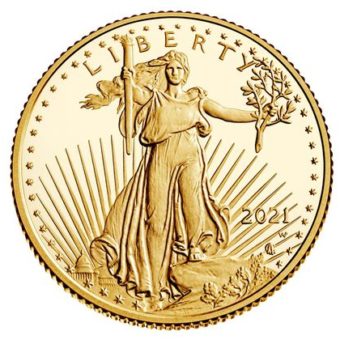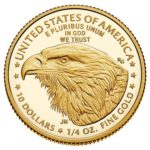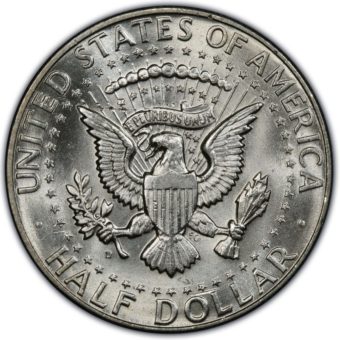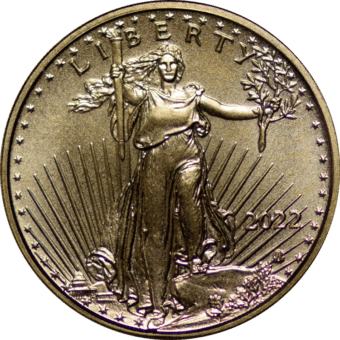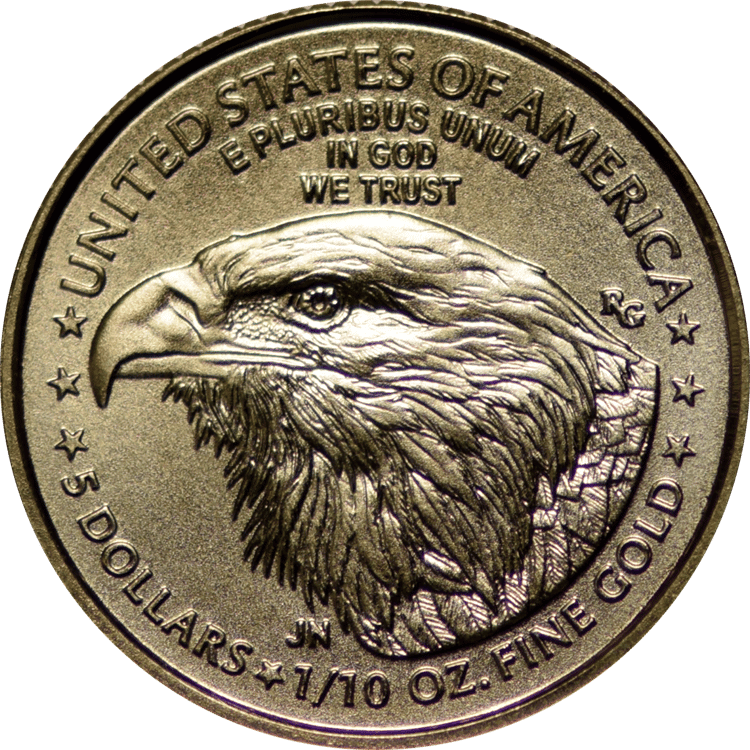Gold surged to fresh records this week, with December futures reaching $3,689.90 and spot prices exceeding their 1980 inflation-adjusted high. Strength in gold was driven by soft U.S. jobs data, subdued inflationary pressures, geopolitical tensions, and growing expectations that the Fed will pursue rate cuts. Safe-haven demand and strong technical momentum contributed, and market participants now have their attention fixed on the upcoming FOMC decision—due this Wednesday—for guidance on how aggressive any easing may be.
Monday – 9.08.25
Gold marched to record levels Monday, with December futures up $29.40 at $3,682.60, while silver rose $0.678 to $42.23, achieving a 14-year high. The rally followed weak August jobs data—just 22,000 payrolls added versus expectations of 75,000, and unemployment rising to 4.3%, its highest since 2021. These signs of labor market softening added fuel to expectations of easier monetary policy, reinforcing fundamentals for precious metals with no obvious reversal in sight.
Tuesday – 9.09.25
Gold held steady with December futures up about $1.80 at $3,679.00. Silver slipped $0.517 to $41.385 amid profit taking following recent highs. Despite the retreat in silver, both metals retained support from strong fundamental indicators and bullish chart patterns, especially after gold broke new records earlier in the session.
Wednesday – 9.10.25
By midday Wednesday, December gold futures were up $2.10 at $3,684.10; silver gained $0.289 to $41.625. Tamer U.S. producer price data and profit taking moderated earlier strength. August PPI unexpectedly fell 0.1% versus expectations of a 0.3% rise; annual PPI slowed to 2.6%. Meanwhile, regional geopolitical flare-ups—Poland downing Russian drones, Israel’s strike in Qatar—supported safe-haven demand. Domestically, a revised jobs report showed weaker job gains than initially reported, prompting Treasury Secretary Scott Bessent to urge the Fed to consider policy adjusting.
Thursday – 9.11.25
Gold ended the day slightly lower after a jump in weekly U.S. jobless claims; year-over-year inflation ticked up in August though core figures held steady. December gold dipped $6.80 to $3,675.10, while silver slipped $0.385 to $41.98. Jobless claims rose by 27,000 to 263,000, above expectations—a signal of softening labor market. Annual CPI climbed to 2.9%, driven by food and vehicles; core CPI remained at 3.1%. Meanwhile, the ECB left rates unchanged, as anticipated.
Friday – 9.12.25
Gold and silver rose in early U.S. trading Friday. Silver hit a 14-year high; December gold added $16.30 reaching $3,689.90, as demand for safety and strong technicals carried momentum. Spot gold topped $3,674.27 this week, surpassing its inflation-adjusted high from 1980. Concerns over economic trends and weakening currencies played a part. Stocks were mixed; U.S. indexes expected to open slightly lower. On trade fronts, Treasury Secretary Bessent is set to meet Chinese Vice Premier He Lifeng next week in Madrid to address issues including TikTok, security, and financial integrity. Talks with India over trade continue, amid tension over oil imports. Domestically, mortgage rates dropped sharply to 6.35%—a steep weekly decline—fueling refinancing and generating interest in potential homebuying amid hopes of further Fed easing.
Jamie Dimon Warns U.S. Economy Is “Weakening” Amid Policy and Geopolitical Uncertainty
The Big Picture
Jamie Dimon, CEO of JPMorgan Chase, observed signs of weakening in the U.S. economy, with lingering uncertainty around the longer-term impact of tariffs, changes in immigration, global tensions, and sweeping fiscal policy. While he does not predict immediate collapse, he highlights growing risk as policy shifts play out over time.
What’s Happening
- Economic outlook: Dimon points to softer labor market trends, reduced business and consumer confidence, and inflation’s persistence as contributors to a slowing growth outlook.
- Policy headwinds: He suggests that the full effects of tariffs, immigration reforms, and major spending bills are still unfolding and will be felt gradually.
- Banking industry: He expects further consolidation, though JPMorgan is not actively pursuing acquisitions at present, even as it prepares to launch a digital banking arm in Germany in 2026.
By the Numbers
- Over 19 years as CEO
- Anticipated leadership transition within five years
- Daniel Pinto, acting CEO since 2020, set to retire in late 2026
- Digital banking presence expanding in the U.K. and Germany
Why It Matters
Dimon’s comments underscore that even with resilient pockets in the economy, policy headwinds and global pressures may weigh more heavily than many assume. For market participants, this adds another layer to consider as Fed decisions approach.
The Bottom Line
The U.S. economic expansion appears to be decelerating, and uncertain policy and geopolitical dynamics could challenge growth. Meanwhile, people with exposure to gold and silver may find the current environment increasingly relevant.
Trump’s Tariffs Slowly Feed Into Consumer Prices as Fed Faces Stagflation Risk
The Big Picture
Tariffs are incrementally pushing up prices on everyday goods—clothing, electronics, groceries—just as signs emerge of labor market softness. The combination of rising costs and modest job growth points toward potential stagflation, complicating the Fed’s balance between inflation control and growth support.
What’s Happening
- CPI impact: Apparel and electronics rose 0.5%, auto parts climbed 0.6%, new vehicles increased 0.3%, energy rose 0.7%, and groceries were up 0.6%—the largest increase since August 2022. Tools and hardware rose 0.8%, furniture and bedding climbed 0.3% month-over-month and 4.7% year-over-year, while coffee surged 3.6% monthly and 20.9% over the year.
- Broad inflation: Goods excluding food and energy rose 0.3% on the month and 1.5% year-over-year, marking the fastest pace since May 2023. Headline and core inflation remain near 3%, above the Fed’s 2% target.
- Consumer behavior: Households are trimming service spending while grappling with higher costs for essentials like food, energy, clothing, and shelter.
- Economist view: Wilmington Trust’s Luke Tilley noted that tariff impacts have been evident in the data for months. Navy Federal’s Heather Long warned that more price hikes are coming as additional costs filter through.
By the Numbers
- Apparel, video, and audio equipment: +0.5% month-over-month
- Motor vehicle parts: +0.6%
- Groceries: +0.6% (largest since August 2022)
- Furniture and bedding: +0.3% MoM, +4.7% YoY
- Coffee: +3.6% MoM, +20.9% YoY
- Core and headline inflation: roughly 3%, above the 2% Fed target
Why It Matters
Persistent price pressures from tariffs, especially when paired with a softening labor market, suggest a scenario where inflation remains elevated even as growth slows. For market participants, that means watching the Fed’s response closely.
The Bottom Line
Tariff-driven inflation is filtering into daily life just as job growth loses momentum. The Fed faces a tough choice: restrain inflation or support easing conditions. People focused on hard assets may find such conditions favourable.
Gold Shoots Higher Above $3,640 as CPI Rises More Than Expected
The Big Picture
Gold edged above $3,640 per ounce after U.S. inflation came in hotter than expected for August. While stronger CPI data complicates the outlook for rate cuts, softer labor trends continue to support safe-haven demand among market participants.
What’s Happening
- CPI report: Headline CPI rose 0.4% month-over-month in August, exceeding expectations of 0.3%, following July’s 0.2% increase. Annual headline inflation climbed to 2.9% from 2.7%.
- Core CPI: Rose 0.3% on the month (in line with forecasts) and held at 3.1% year-over-year.
- Market reaction: Spot gold was last quoted at $3,641.28, up 0.02% on the day.
- Analyst view: Chris Zaccarelli of Northlight Asset Management sees a September rate cut as likely, but notes that ongoing inflation could limit further easing.
- Fed angle: While inflation pressures complicate long-term policy, labor market softness continues to push the market toward expecting a cut this month.
By the Numbers
- Spot gold: $3,641.28 (+0.02%)
- CPI month-over-month: +0.4% (vs. +0.3% expected)
- CPI year-over-year: +2.9%
- Core CPI month-over-month: +0.3%
- Core CPI year-over-year: +3.1%
Why It Matters
Higher inflation boosts interest in gold as a store of value, but it also increases pressure on the Fed to hold rates higher for longer. For people observing market trends, that may create tension between inflation hedging and interest rate sensitivity.
The Bottom Line
Gold remains firm above $3,640 as markets weigh hotter price data against signs of weakening labor. Should labor soften further, gold may continue to climb toward fresh records, even with inflation pressures.
Wholesale Prices Unexpectedly Decline 0.1% in August as Fed Decision Nears
The Big Picture
U.S. wholesale prices slipped in August, easing inflationary concerns and giving the Fed more scope ahead of its policy meeting. The reaction in markets was positive: futures rose and Treasury yields eased as expectations for rate cuts gained strength.
What’s Happening
- PPI report: Headline producer prices declined 0.1% in August (vs. +0.3% expected), following a downwardly revised +0.7% in July. Year-over-year, PPI rose 2.6%.
- Core PPI: Excluding food and energy, PPI also fell 0.1%. Excluding food, energy, and trade, it rose 0.3% month-over-month and 2.8% year-over-year.
- Services prices: Fell 0.2%, driven by a 3.9% decline in machinery and vehicle wholesaling margins.
- Goods prices: Up 0.1%, with food up 0.1% and energy down 0.4%. Tobacco prices rose 2.3% amid tariff impacts.
- Fed backdrop: Labor market concerns deepen following a major downward revision in job creation data—nearly 1 million fewer payrolls than previously reported.
By the Numbers
- PPI MoM: –0.1%
- PPI YoY: +2.6%
- Core PPI MoM: –0.1%
- Ex-food/energy/trade PPI MoM: +0.3%
- Services prices: –0.2%
- Machinery/vehicle margins: –3.9%
- Tobacco prices: +2.3%
Why It Matters
The drop in wholesale inflation supports the view that price pressures at earlier stages are easing. For market participants, this tilts probabilities toward a more accommodative Fed policy.
The Bottom Line
Wholesale inflation’s softness bolsters expectations for a rate cut next week. With stubborn inflation pressures cooling and labor market signs weakening, the stage is set for an important decision.
Economic Calendar: September 15 – September 19, 2025 (ET)
Monday, Sept. 15
8:30 AM – Empire State Manufacturing Survey (Sep)
Regional manufacturing gauge; early signal on factory health.
Tuesday, Sept. 16
8:30 AM – U.S. Retail Sales (Aug)
Key consumer spending indicator; major market mover.
9:15 AM – Industrial Production & Capacity Utilization (Aug)
Snapshot of factory output and efficiency.
Wednesday, Sept. 17
8:30 AM – Housing Starts and Permits (Aug)
Housing market momentum and construction outlook.
2:00 PM – FOMC Interest-Rate Decision
Fed’s policy call; top-tier market event.
Thursday, Sept. 18
8:30 AM – Initial Jobless Claims (week ending Sept. 13)
Weekly labor-market pulse.
8:30 AM – Philadelphia Fed Manufacturing Survey (Sep)
Regional business activity and sentiment.
10:00 AM – U.S. Leading Economic Indicators (Aug)
Composite of forward-looking indicators; signal on growth trends.
Friday, Sept. 19
None scheduled
Impact on Precious Metals Markets
The week ahead offers several key data releases that could significantly influence gold and silver prices. Here’s how each could affect the precious metals space based on market expectations:
- Empire State Manufacturing Survey (Monday):
A strong reading may suggest improving industrial activity and broader economic strength, which could reduce demand for precious metals. Conversely, a weak report would raise concerns about economic momentum, supporting gold and silver as safe-haven assets. - Retail Sales (Tuesday):
Higher-than-expected retail sales would indicate consumer resilience, potentially favoring risk assets over safe havens and putting downward pressure on metals. Weaker sales could point to slower economic activity, boosting the appeal of gold and silver. - Industrial Production & Capacity Utilization (Tuesday):
An uptick in factory output and utilization would signal economic expansion, typically bearish for precious metals. On the other hand, a slowdown would reinforce concerns about growth and support safe-haven demand. - Housing Starts & Building Permits (Wednesday):
Robust housing data may reflect economic stability, potentially limiting upside for metals. Weaker housing numbers would likely be seen as another sign of economic softness, strengthening the case for gold and silver. - FOMC Interest Rate Decision (Wednesday):
A hawkish tone or unexpected rate hike could strengthen the U.S. dollar and raise real yields, typically weighing on gold and silver. A dovish statement or confirmed rate cut would likely weaken the dollar and support metals. - Initial Jobless Claims (Thursday):
Rising jobless claims would signal labor market stress, increasing safe-haven interest in precious metals. Lower-than-expected claims would suggest ongoing labor market strength, potentially limiting upside in gold and silver. - Philadelphia Fed Manufacturing Survey (Thursday):
Strong regional business activity may shift sentiment toward equities, reducing safe-haven demand. Weakness in this report would favor gold and silver as economic uncertainty grows. - U.S. Leading Economic Indicators (Thursday):
Positive growth in LEIs may point to economic stabilization and reduce demand for precious metals. Declining or flat indicators would enhance the recession narrative, supporting metals as a hedge.
Stay Ahead with Prime Assets
As the data rolls in and central banks adjust course, it’s more important than ever to stay informed. Explore more expert commentary and market analysis by visiting our website. Discover how physical precious metals can help you stay grounded in an ever-shifting economy.

